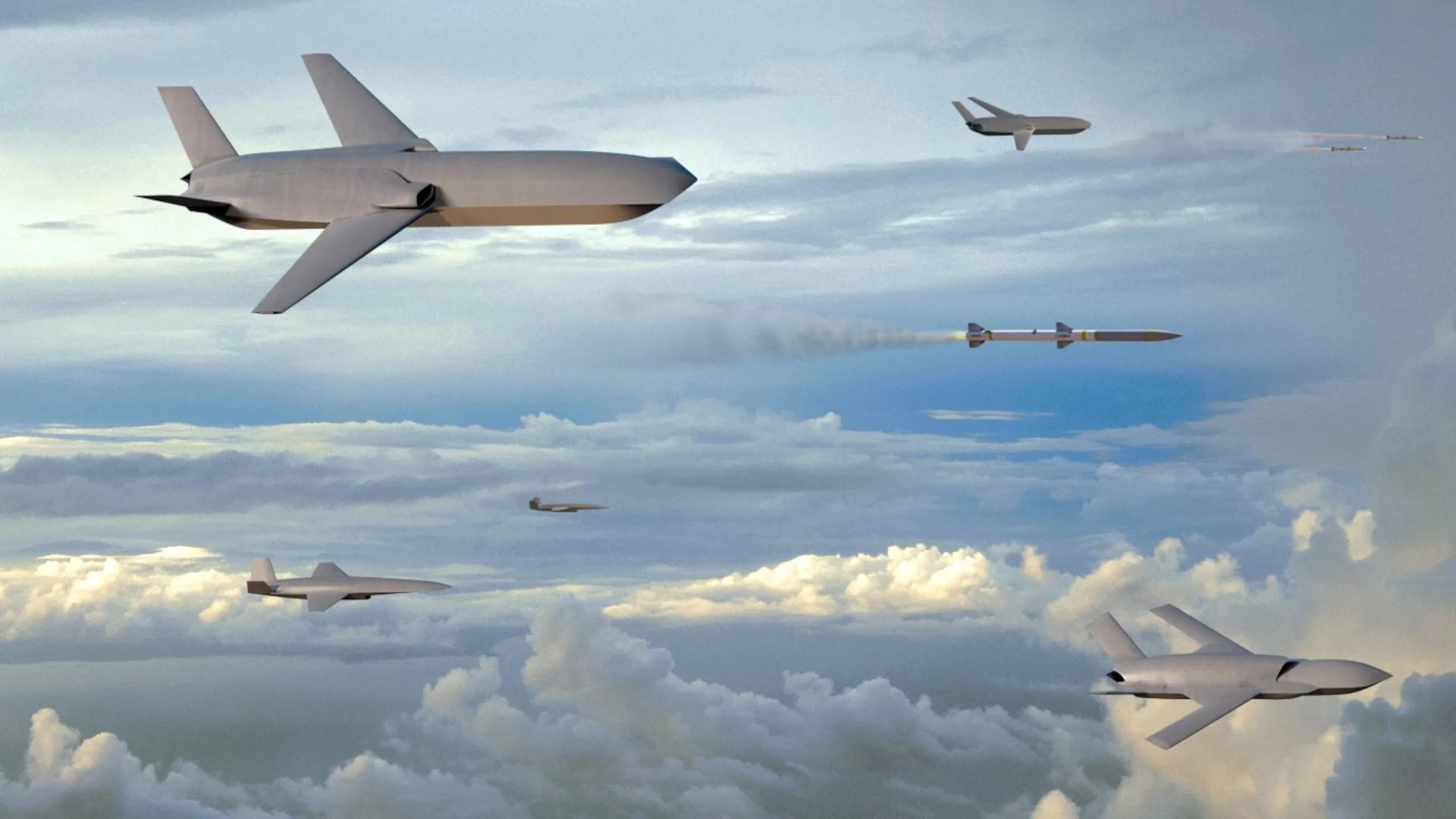New details about the requirements for the U.S. Air Force’s Collaborative Combat Aircraft drone program show an emphasis on range and speed, as well as being able to take off from shorter runways. The service is now looking at jet engines in the 3,000-to-8,000-pound thrust class to help the highly autonomous uncrewed aircraft achieve the desired performance and meet other capability demands.
The Air Force Life Cycle Management Center at Wright-Patterson Air Force Base in Ohio recently put out an unclassified Request for Information (RFI) relating to the Collaborative Combat Aircraft (CCA) program, which contained information about the engine and other requirements.
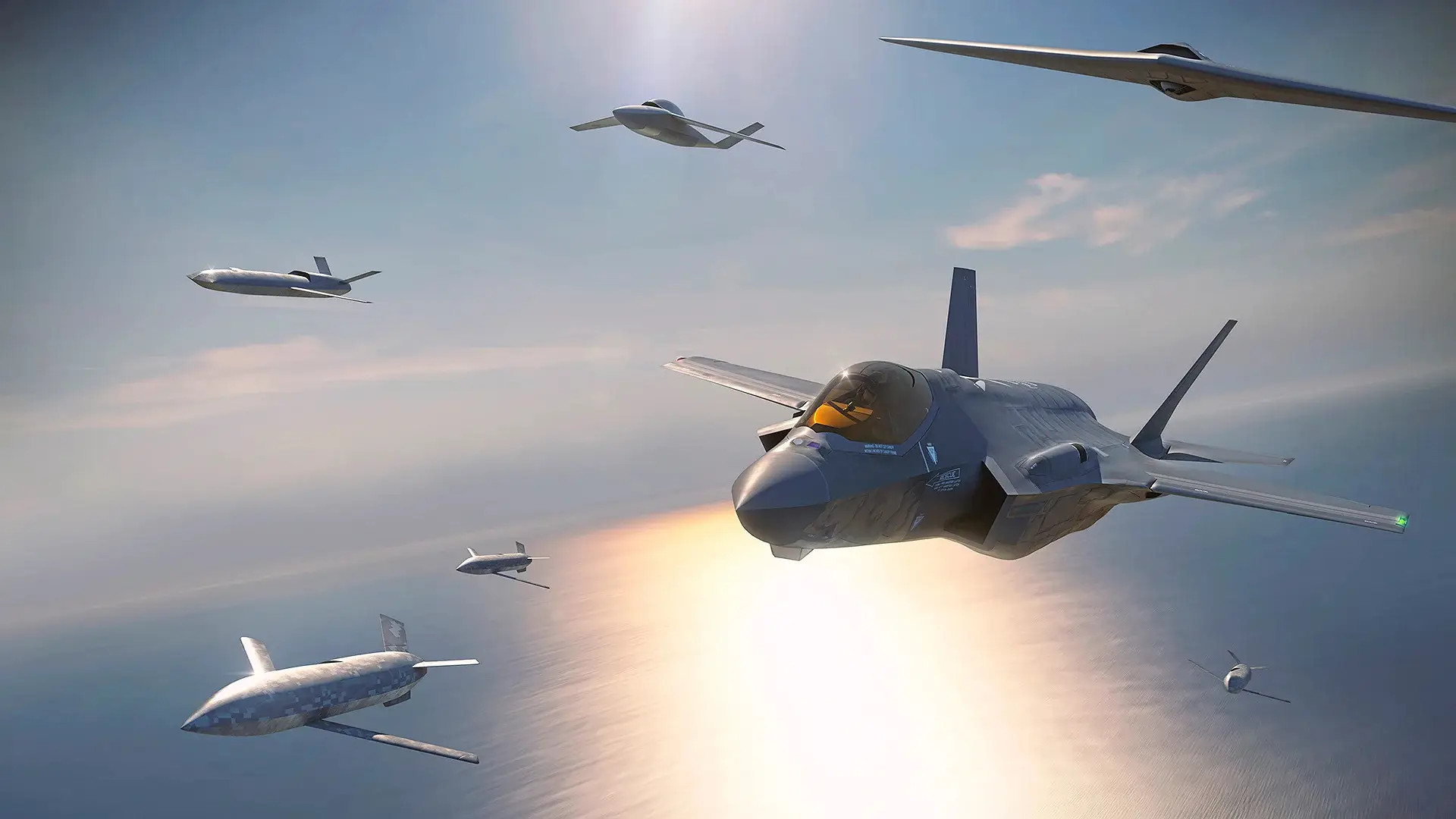
“For the purpose of this response, the engine characteristics of interest include 3000-8000 lbf thrust class engines,” the RFI explains. The notice says the Air Force is interested in details about any “off-the-shelf, modified off-the-shelf, derivative, and new engine designs” that might meet its needs.
Popular existing jet engines in the desired thrust range include the Williams FJ44, Honeywell TFE731, and Pratt & Whitney Canada PW500-series. They are most typically utilized in light military jets like the Aermacchi M-345 and business jets like the Cessna Citation Family.
The FJ44 is also notably the engine that the multi-purpose Fury drone, now part of defense contractor Anduril’s portfolio, has been explicitly designed around. Fury, which The War Zone recently profiled in great depth, could be positioned to meet some of the Air Force’s CCA demands. Although, it will have a lot of competition as major and smaller players alike wrangle for a piece of what will likely be a hugely lucrative and disruptive future CCA market.
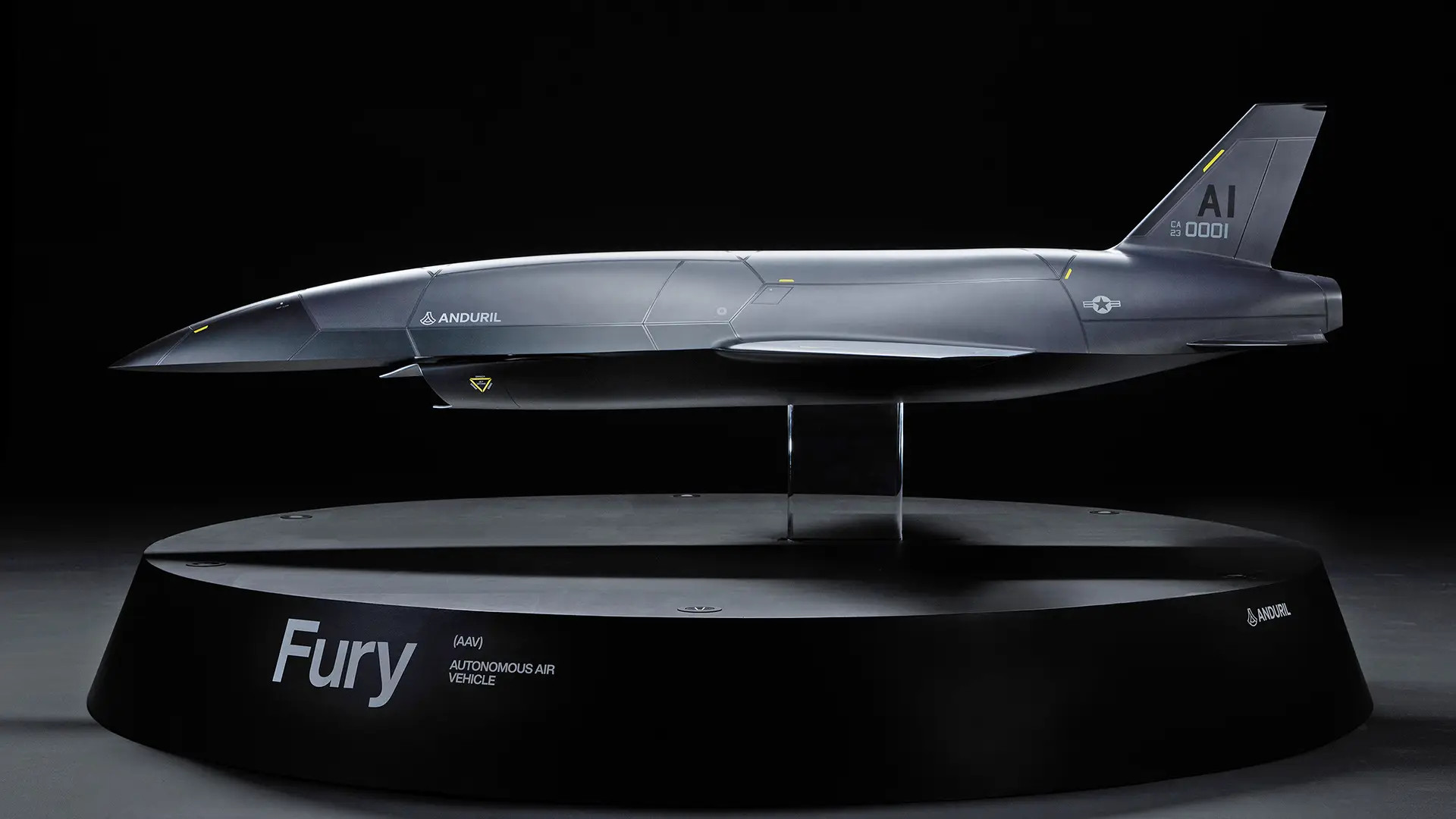
“For the purpose of this response, the desired aircraft characteristics of interest for evaluating
the enabling capabilities of the engine’s options are as follows: increased range, reduced runway take-off distance, increased Mach capability, increased power and thermal capacity, and increased payload,” the contracting document adds.
The RFI does not provide any specific information about the baseline performance and capabilities the Air Force is looking for an “increase” over when it comes to its CCAs. It also stresses that the responses the service receives will be used for “informational and planning purposes” only.
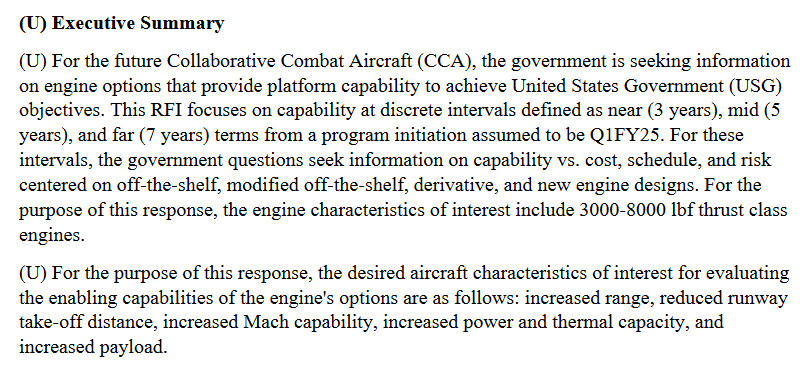
Still, the focus areas outlined in the RFI offer useful insight into the Air Force’s still-evolving CCA requirements. They also line up with public statements about the service’s current vision for these drones, especially in the context of a potential future high-end fight in the Pacific region against China.
The Air Force has said previously that it wants to acquire a fleet of at least 1,000 CCAs, if not many more. It expects these drones will be primarily tasked, at least initially, with acting as “weapons trucks,” electronic warfare platforms, and sensor nodes, in cooperation with crewed tactical jets.
The 1,000 CCA figure was based on a notional concept of operations that paired two of the drones with each of 200 new sixth-generation crewed stealth combat jets – a design being developed under the Next Generation Air Dominance (NGAD) program – and 300 F-35A Joint Strike Fighters. The service is already eying additional roles and missions for these uncrewed aircraft in cooperation with other platforms, and they could also be employed on their own.
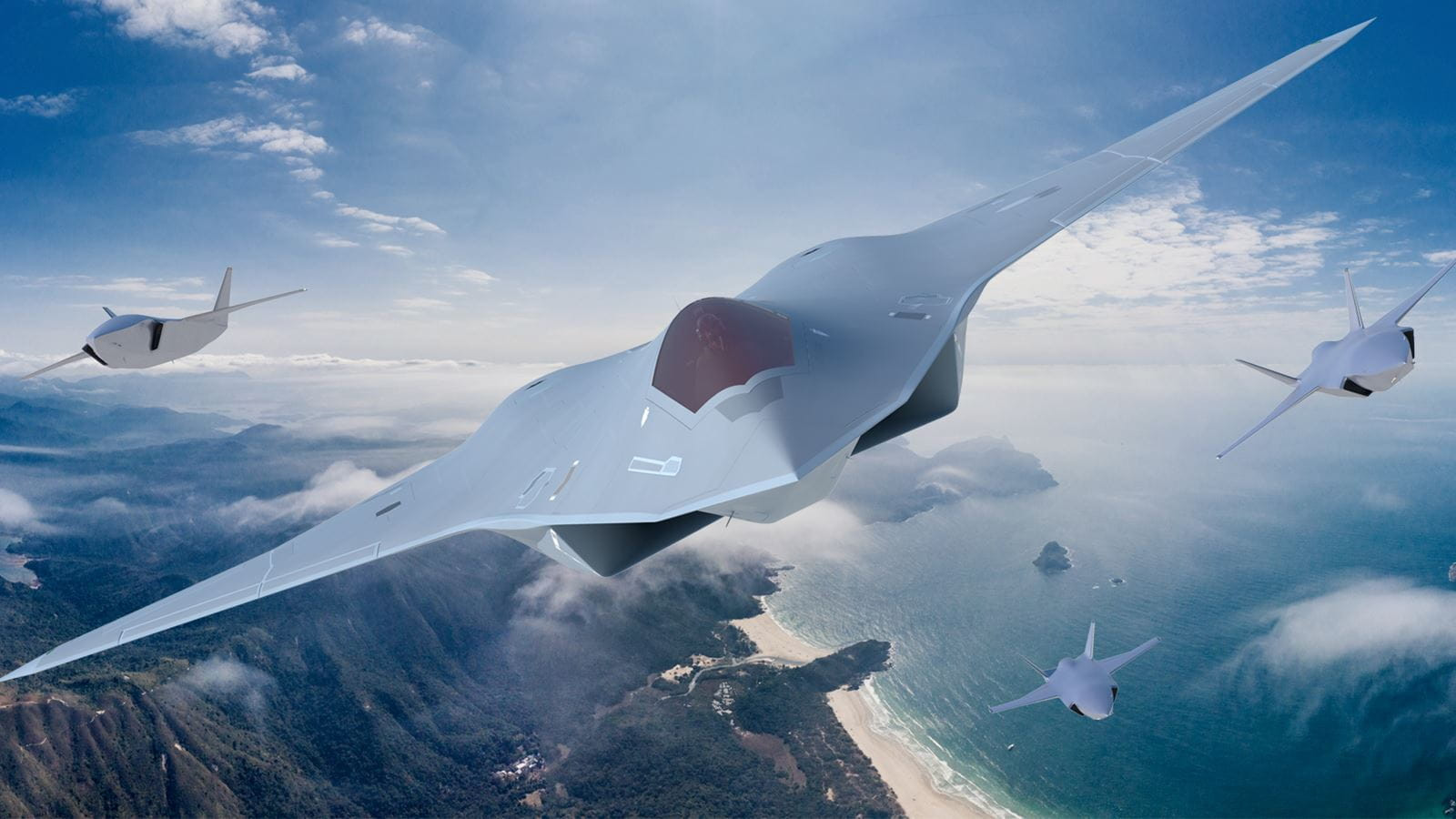
“Let’s make sure we step back, and in the unclass[ified] realm, where we can, explain to people what problems are trying to solve. So, some of the narrative that we’ve given is ‘affordable mass.’ … there’s obviously two key points there,” Air Force Gen. Mark Kelly said at a media roundtable that The War Zone and other outlets attended on the sidelines of the Air & Space Forces Association’s main annual conference last month. “One, it’s affordable. Two, there’s lots of them. … that’s kind of a blinding flash of the obvious.”
“The other one is, if you look at the Pacific Theater, there’s some challenges we’re trying to solve besides the affordable mass. And one is it’s a big chunk of water space, airspace, real estate. So range is an issue,” the general, who is head of Air Combat Command, continued. “So when range is an issue, and I can send a fighter or bomber, whatever platform, to the lengths of its range, as soon as it gets to where the gas gauge says half, it’s got to turn around and come back. … if I can instead send a platform, we’ll just say, two-thirds that distance or three-fourths that distance, and then… send the CCAs forward, that solves a lot of my range problem.”
Though Kelly did not specifically mention speed in this context, CCAs will need to be sufficiently fast to keep pace with the crewed platforms they’re operating together with. Being as fast as possible will also simply help them cover longer distances faster, which is obviously desirable in various operational contexts. High-subsonic performance will likely be important in order to keep up with their manned counterparts during some tactical portions of a mission. It’s possible that careful mission planning can help overcome the speed differential for slower collaborative drones, though.
When it comes to range, basing the drones at forward locations closer to the fighting would give them more on-station time, during which time different crewed aircraft entering and exiting that portion of the battlespace could also exchange control of them. This has all come up specifically in discussions about how CCAs might work together with the B-21 Raider stealth bomber down the line, though it would apply to other platforms, as well.
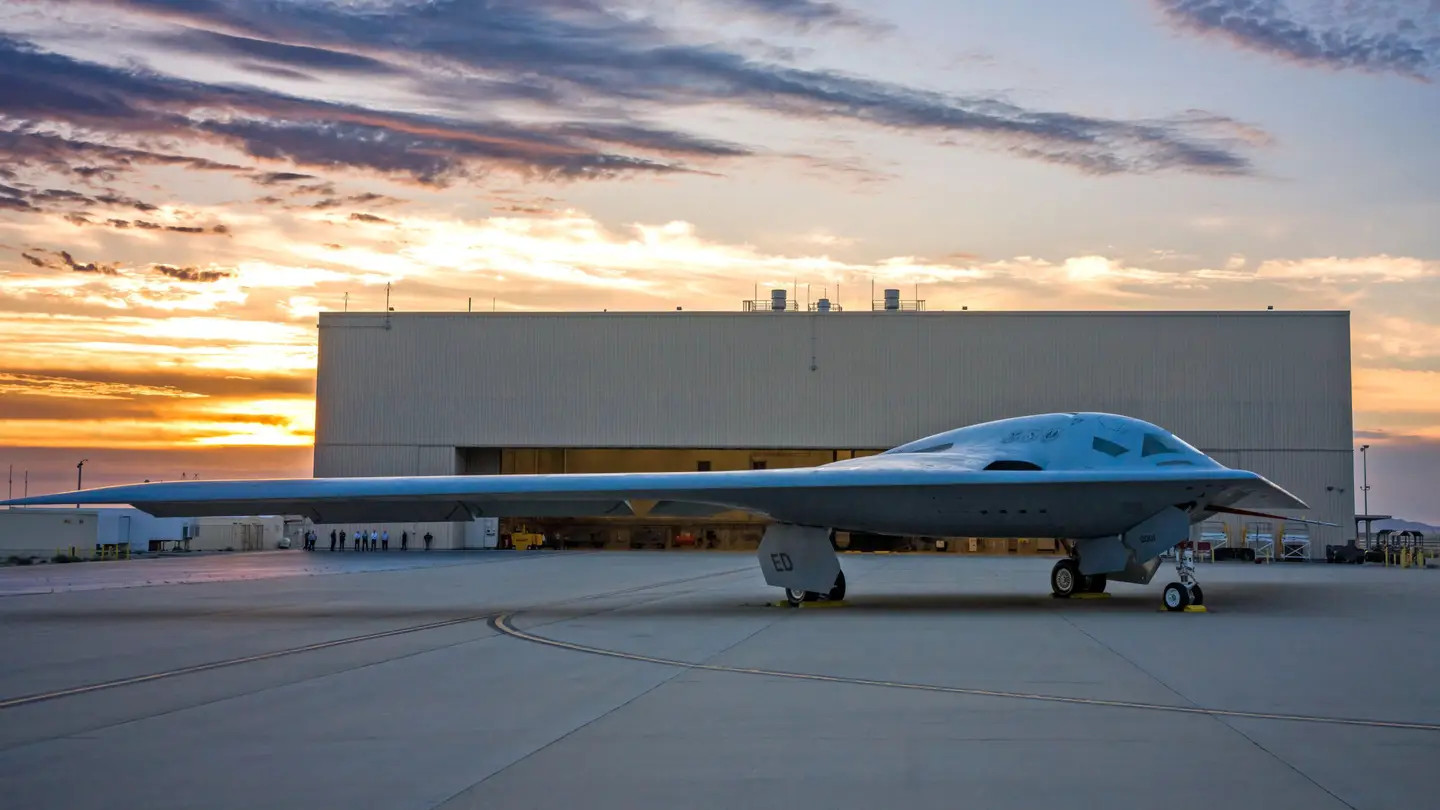
“The kind of scenario … just described, is a possibility, where, basically, the B-21 ‘picks up’ CCAs as it gets closer to the operating area,” Secretary of the Air Force Kendall said at another media roundtable at the Air & Space Forces Association’s conference in September. “The CCAs could be managed forward, if you penetrate, as augmentation to the B-21. They could provide defensive capability around the B-21. They could provide better situational awareness, potentially, for the B-21.”
With all this in mind, being able to at least take off from shorter runways, or even be entirely runway-independent, would expand the number of potential locations CCAs could be launched from, increasing their overall flexibility. It could make it easier to disperse them in the lead-up to a major conflict, or in the opening phases of one, to help reduce their vulnerability to enemy strikes, as well.

“I would expect that we would have them [CCAs] in our main operating bases to start [at the beginning of] any competition/conflict,” ACC head Gen. Kelly said, speaking hypothetically, at his roundtable last month. “Then the theater commanders would say ‘we’re now going to nest them forward or elsewhere around the theater.'”
The other points in the RFI about the engine used on the CCAs helping to provide an “increase” with regard to both “power and thermal capacity” and “payload” also speak to comments the Air Force has made about the expected tradeoffs that will be required when designing these drones.
“There’s got to be affordable mass. So they [Air Force requirements planners] work up and down that graduated scale,” Gen. Kelly explained back in September. “What that graduated scale looks like is all those bits and pieces I talked about, range, managing risks, which will be signature and payload and defensive systems, etc, etc, etc. Up and down that scale, obviously, is where the same thing that goes up that scale in terms of capability goes up that scale in terms of price. And so we are trying to … find the sweet spot.”
Kelly also said he expected this to lead to multiple types of CCAs optimized for different mission sets and threat environments.
The video below shows Lockheed Martin Skunk Works’ vision for a future “distribute team” that includes multiple tiers of drones.

“We’ve constructed the [CCA] program in such a way that we’re able to balance price versus… requirements and understanding where those trades exist,” Air Force Brig. Gen. Dale White, the Air Force’s Program Executive Officer for Fighters and Advanced Aircraft, said at a panel discussion at the Air & Space Forces Association’s conference in September. “And then building that affordability piece into the foundation of how requirements get built.”
“Anytime you’re doing something technical, from an engineering perspective, you pull on one thing, you typically lose something else. And so you end up turning dials to find out where that sweet spot is,” Brig. Gen. White added. “This is an area where we spend a lot of time, because this is important and it is so challenging.
“We’re letting the operational analysis tell us, kind of lead us down that path, not just [go] ‘hey, I’m gonna go write a requirements document,'” he continued. “What is the analysis, the intelligence, and the threat environment telling us we need to do to be able to get that [right mix of] capability?”
All this makes clear that the Air Force is still very much in the process of refining its understanding of what it wants its future CCAs to do, at least initially. The recently released RFI only underscores this reality, but getting information about the available engine options for these drones can only help further solidify the requirements.
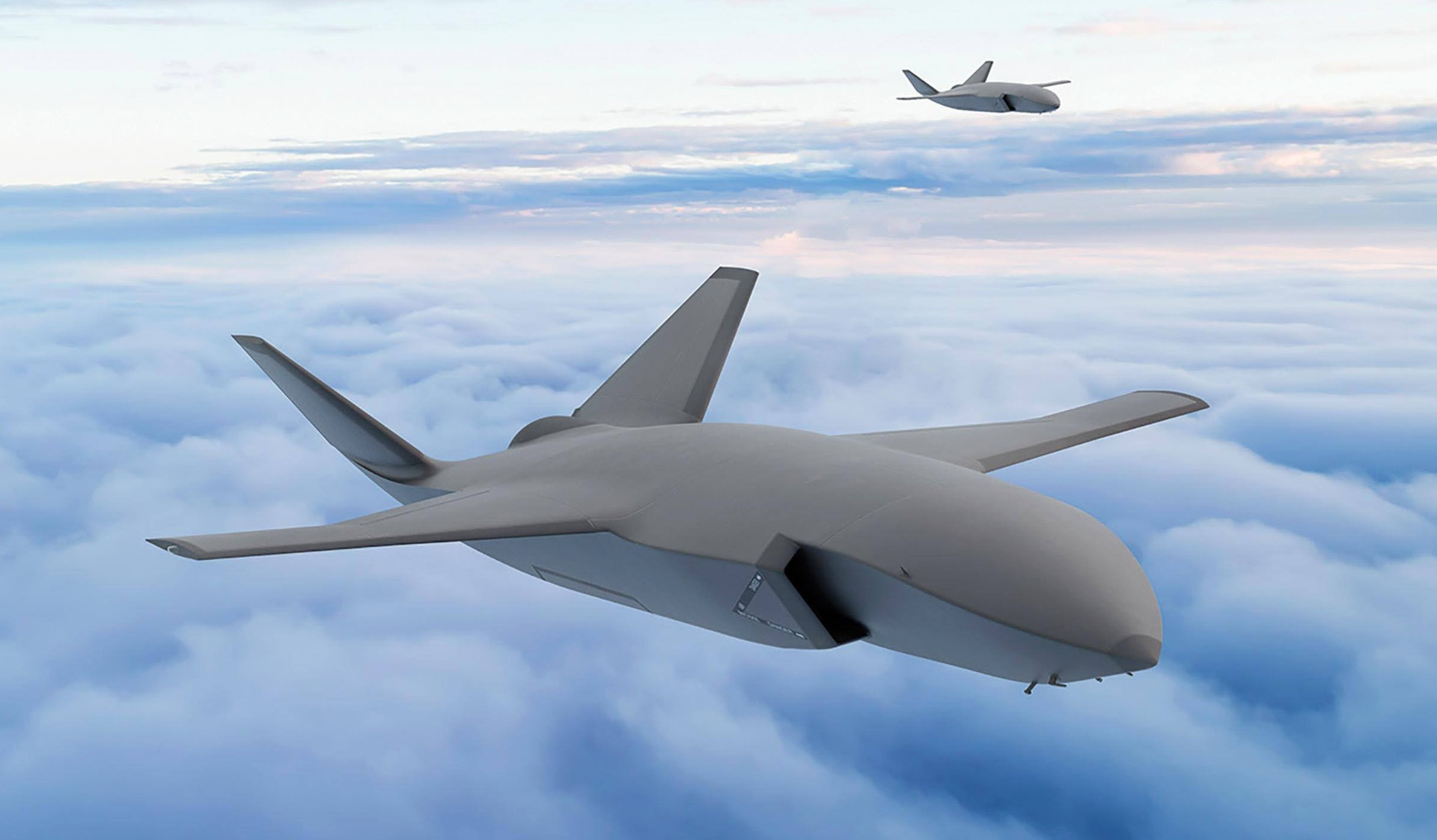
In addition, the Air Force is engaging on a routine basis with the U.S. Navy, which has its own separate advanced drone efforts in the works. The two services are actively collaborating on relevant technologies, including command and control architectures, as well. At his roundtable at the Air & Space Forces Association’s conference last month, Gen. Kelly noted that this also means Air Force and Navy officials are also regularly meeting to discuss requirements issues.
For the Air Force, the baseline CCA requirements are likely to firm up relatively soon if the service intends to keep to its schedule for the program, which it views as critical success in a future high-end conflict. The stated goal in the past has been for a formal CCA competition to kick off sometime in the next year or so. The engine RFI includes a notional “program initiation” timeframe starting in the first quarter of Fiscal Year 2025, which begins next October.
Between now and then, the Air Force will need to hone in more on the requirements “sweet spot” for its future collaborative drones.
Contact the author: joe@thedrive.com
